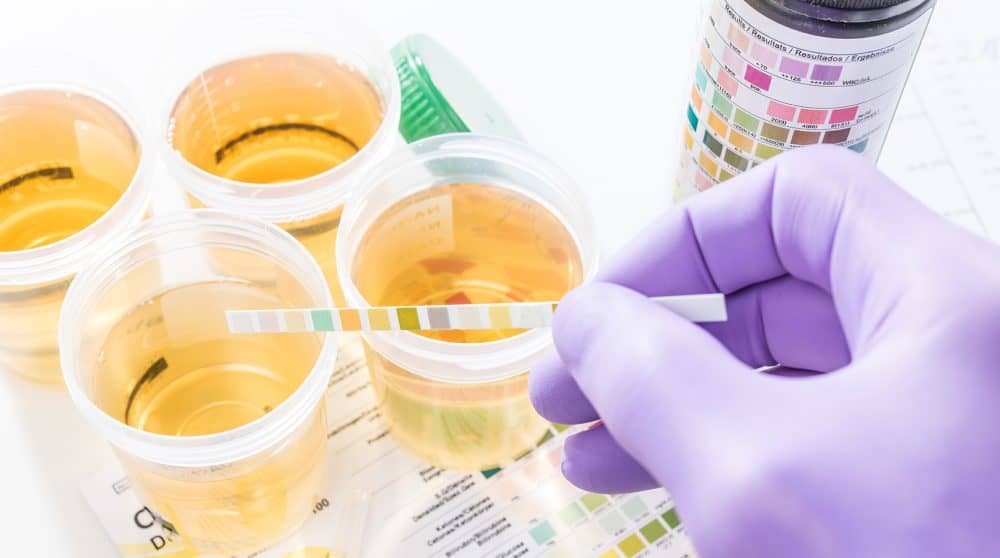Understanding How The Kidneys Work
The kidneys are designed to filter the blood in order to remove excess wastes, toxins, and fluid. Each kidney has approximately one million processing units known as “nephrons.” Each nephron has an area called the glomerulus, where the filtering occurs. These glomeruli have the ability to distinguish wastes from vital components of blood, such as proteins.
What is Proteinuria?
Proteins are fundamental to our body as they serve in critical roles for our cells, tissues, and organs to function. However, when the glomeruli are not working properly, essential blood components, such as proteins and red blood cells, can leak through the filter and be excreted in the urine. The presence of excess proteins in the urine is called proteinuria and can often present as foamy or “bubbly” urine.
Each day, our kidneys excrete a small amount of a specific protein called Tamm-Horsfall proteins (<150mg/day), which is normal. However, when other proteins (not Tamm-Horsfall proteins) are excreted in the urine, this may be a sign of an underlying disease. Albumin is a specific protein that makes up approximately 50-60% of all proteins in our body, and as a result, is one of the best tests for monitoring protein levels in the urine. Albuminuria is the presence of albumin in urine and can be measured with a simple urine test in your doctor’s office.
Causes of Proteinuria
Proteinuria can be due to a problem within the nephron, specifically the glomerulus or the proximal tubule. It can also be due to an overproduction of protein in the body.
The most common cause of proteinuria in the United States is due to diabetes mellitus. The excess glucose (“sugar”) levels cause damage to the glomerulus and lead to protein leaking through into the urine. As the amount of proteinuria increases, this leads to worsening of kidney function and speeds up the process of kidney failure. Therefore, it is critical to control the amount of proteinuria in order to preserve kidney function. There are numerous diseases that can cause proteinuria (highlighted below).
Nephrotic Syndrome
Severe proteinuria can lead to a condition known as Nephrotic Syndrome. Nephrotic Syndrome is a combination of severe proteinuria (>3500mg/day), hypoalbuminemia (<2.5g/dL), hyperlipidemia, and edema. This syndrome develops when excessive amounts of protein are lost in the urine leading to insufficient amounts of certain proteins in the body.
Hypoalbuminemia (low levels of albumin in the blood) is a result of excess albumin lost through the urine. Low albumin levels in the blood will cause edema (“excess swelling” in the body). Severe proteinuria causes the liver to over-produce proteins to replenish the proteins that are lost. This over-production also includes building lipids (fat, cholesterol, triglycerides), resulting in hyperlipidemia (high lipid levels), and increased risk of heart disease.
Causes of Nephrotic Syndrome are categorized into primary glomerular disorders (which directly affect the glomerulus only) and manifestations of systemic diseases (which affect the body as a whole). The primary glomerular diseases are further divided into non-immune complex diseases (Minimal Change Disease, Focal Segmental Glomerulosclerosis, etc.) and immune-complex diseases (Membranous Nephropathy, Membranoproliferative Glomerulonephritis, etc.).
The list of systemic diseases which can affect the glomerulus is very broad and includes genetic diseases, Lupus, Multiple Myeloma, Amyloidosis, HIV, and many more.
Symptoms of Proteinuria/Nephrotic Syndrome
- Swelling of the face, belly, legs, feet, ankles
- Foamy (“Bubbly”) urine
- Weight gain
- Shortness of breath
- Fatigue
Contact Us
Proteinuria is a concerning sign for underlying disease and should be investigated. At The Kidney and Hypertension Center, we provide consultation and ongoing care for the prevention and treatment of kidney-related diseases. Schedule your appointment today!


